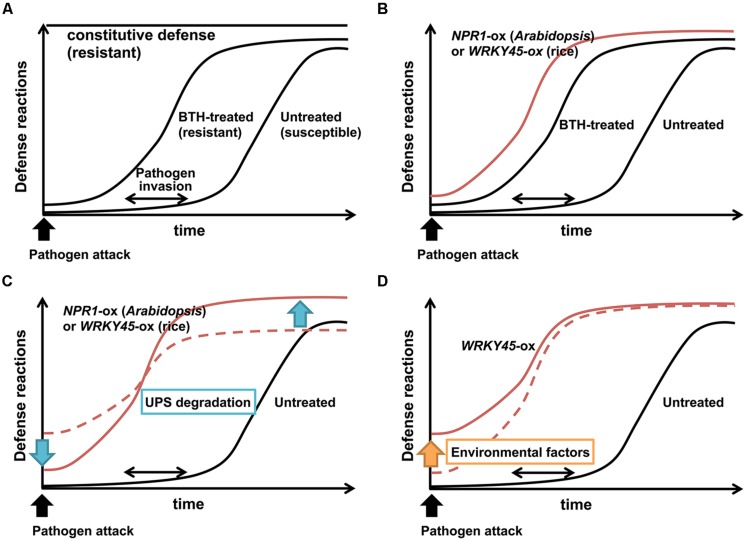FIGURE 1.
Effects of priming on induced disease resistance. (A) In untreated wild-type plants, activation of defense reactions is slow and/or weak to counteract pathogens. By contrast, constitutive defense activation imposes fitness costs on plants. Chemical defense inducers such as BTH prime plants for rapid and/or strong defense reactions upon pathogen infection, thereby conferring plants with disease resistance without major fitness costs. (B) Overexpression of NPR1 (Arabidopsis) or WRKY45 (rice) mimics priming by BTH. (C) UPS degradation of NPR1 (Arabidopsis) or WRKY45 (rice) suppresses basal defense levels in the absence of pathogens, and enhances defense levels upon pathogen infection, possibly contributing to the priming effect. (D) Environmental factors increase basal levels of WRKY45-dependent defense, leading to higher fitness costs.

